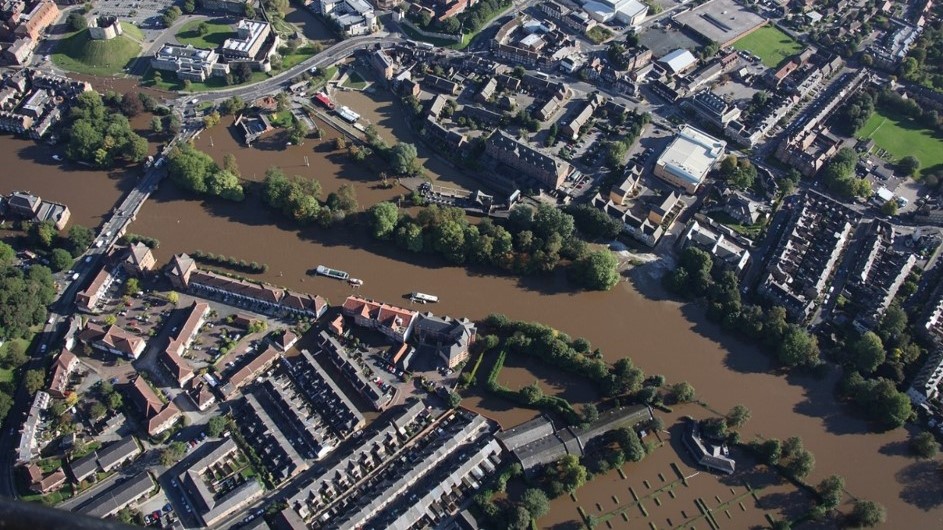The newly refurbished Foss Barrier, and completed flood defence work in the city, are being officially opened at an event in York.
The £38 million Environment Agency project to improve the barrier, combined with completed flood defence work in York, better protects 2,000 properties and makes the city more resilient to the impacts of climate change.
Following the devastating floods of Boxing Day 2015 when 627 properties flooded in York, the Government provided £45 million funding toward flood defence work in the city in addition to £38 million to upgrade the Foss Barrier to provide better flood protection to properties along the Rivers Ouse and Foss.
Improvement work at the pumping station started in spring 2016, and now that it is complete means the Foss Barrier is now one of the most resilient flood defences in the country.
The project milestone is being marked at an event by the chair of the Environment Agency, Emma Howard Boyd.
Emma Howard Boyd, Chair of the Environment Agency, said: “York is a historic city which is no stranger to the effects of flooding. The upgraded Foss Barrier and flood defence work across the city will make people and businesses more resilient to future climate impacts. York has always managed to prosper through floods from its great rivers and as climate change makes the rest of the world more vulnerable to flooding York’s progress is a model.
“The Environment Agency’s work here continues and with further investments we are upgrading and creating new flood storage areas as well as installing bespoke property level protection to homes and businesses across the city. We are also working with partners upstream to find storage capacity and natural flood management opportunities in the Swale, Ure, Nidd and Ouse catchments.”
Floods Minister Rebecca Pow said: “The completion of upgrades to the Foss Barrier is an important day for the people of York. It’s part of more than £80 million of government funding for flood defences in the city since the devastating floods on Boxing Day 2015, helping to protect 2,000 homes and businesses from the impacts of climate change.
“This is part of significant ongoing investment in flood schemes across Yorkshire and the Humber, with over half a billion pounds invested across the region since 2015 – more than any other part of the country.”
The Foss Barrier protects properties by stopping flood water from the River Ouse backing up along the River Foss after heavy rainfall and was originally built in 1987.
The barrier continually protected the city during the floods of 1995, 2000, 2007 and 2012, but following the floods in December 2015 work started to improve it to help adapt to the impacts of climate change.
The upgrade included replacing the old gate and its structure, improvements to the mechanical and electrical equipment needed to control the barrier and installing eight new high-powered pumps, increasing the pumping capacity from 30 to 50 cubic metres per second. The Boxing Day 2015 floods saw 40 cubic metres of water a second travelling down the Foss.
The work has also included an upgrade to the pumping station’s electricity supply and new back-up generators meaning they can operate during a power failure.
There are 18 areas of work across the city where flood defences are being constructed, including installing property level flood protection such as flood doors, temporary barriers, pumps and valves, which reduce the chance of flood water getting into a property.
The upgrade of the Foss Barrier, completion of new flood defences around Memorial Gardens and North St, Lower Bootham, Marygate, the village of Bishopthorpe, and the roll out of flood resilience products means that over 2,000 properties are now better protected against the risk of flooding. Many more are to be protected through the year with the completion of flood defence work near Clementhorpe.
With the majority of inner-city work near completion, attention will focus on major construction work on flood schemes at Clifton and Rawcliffe and the Foss flood storage area which will hold up to a million cubic metres of water during severe weather and protect a further 630 properties.



